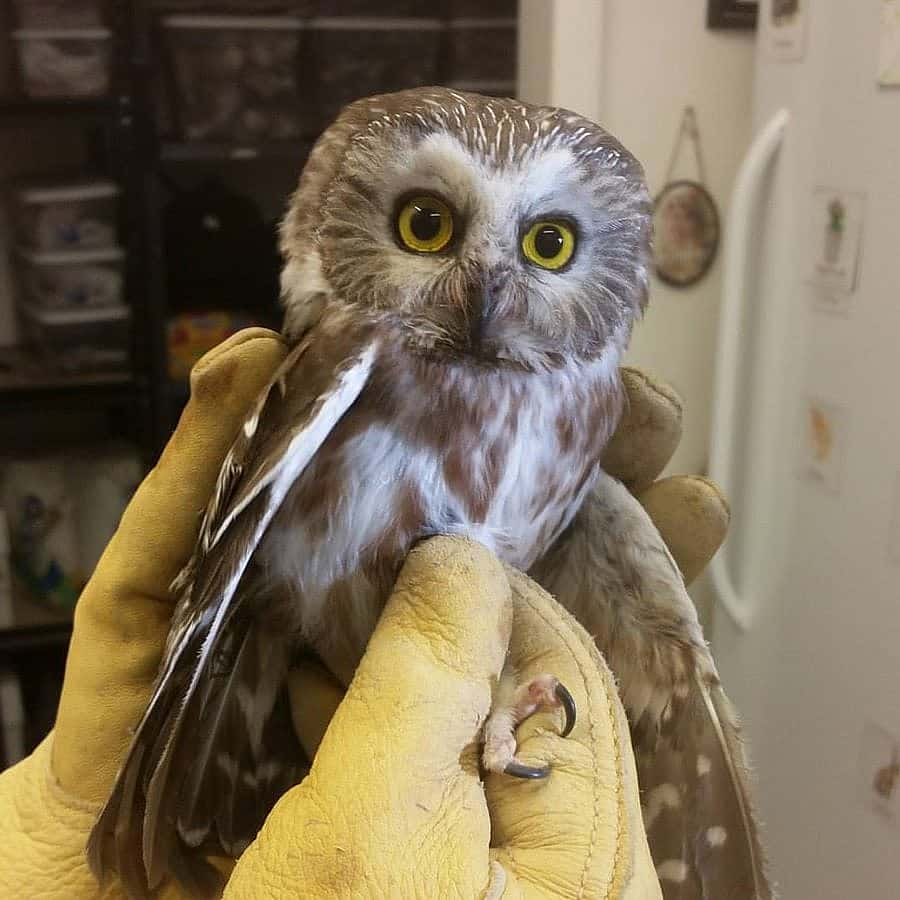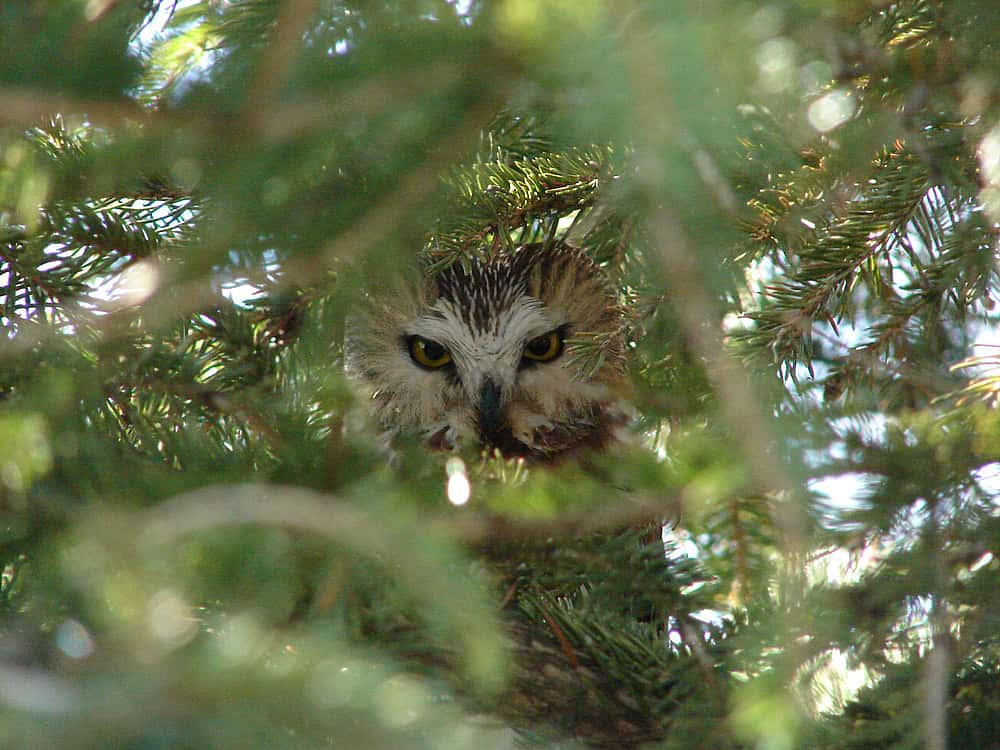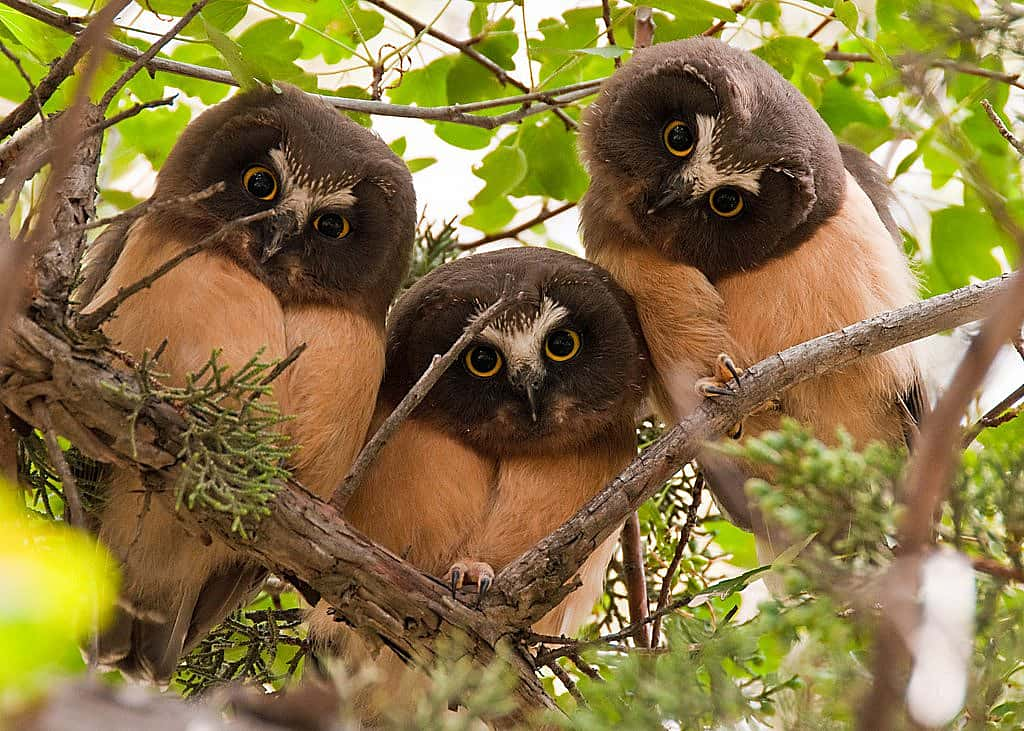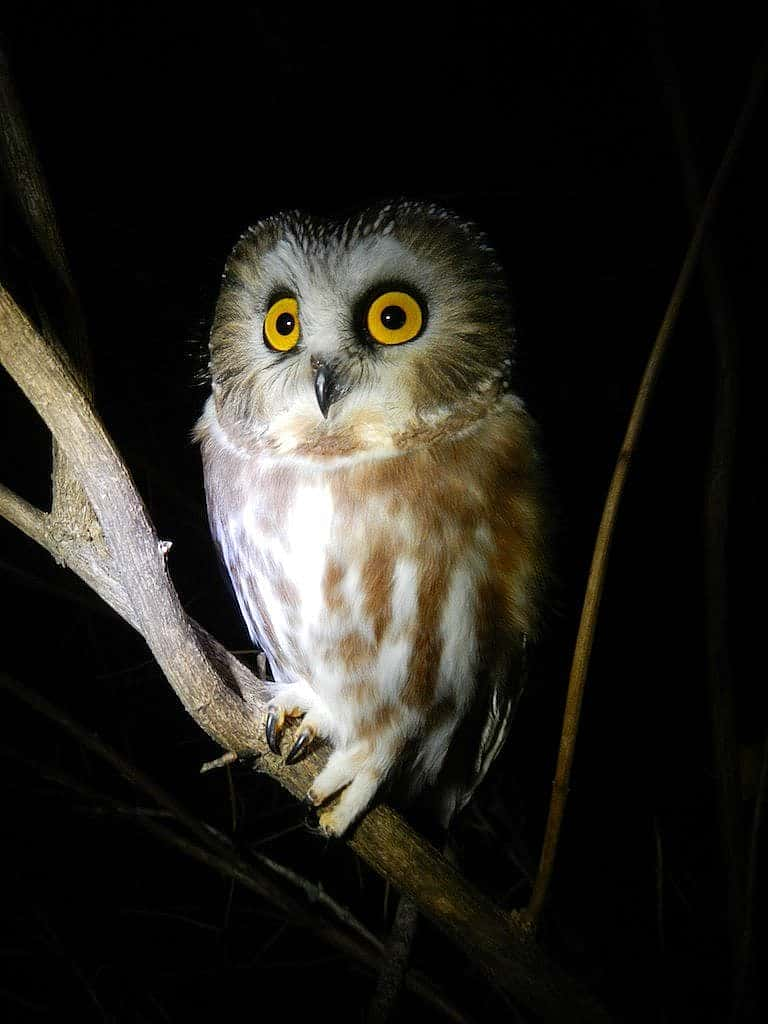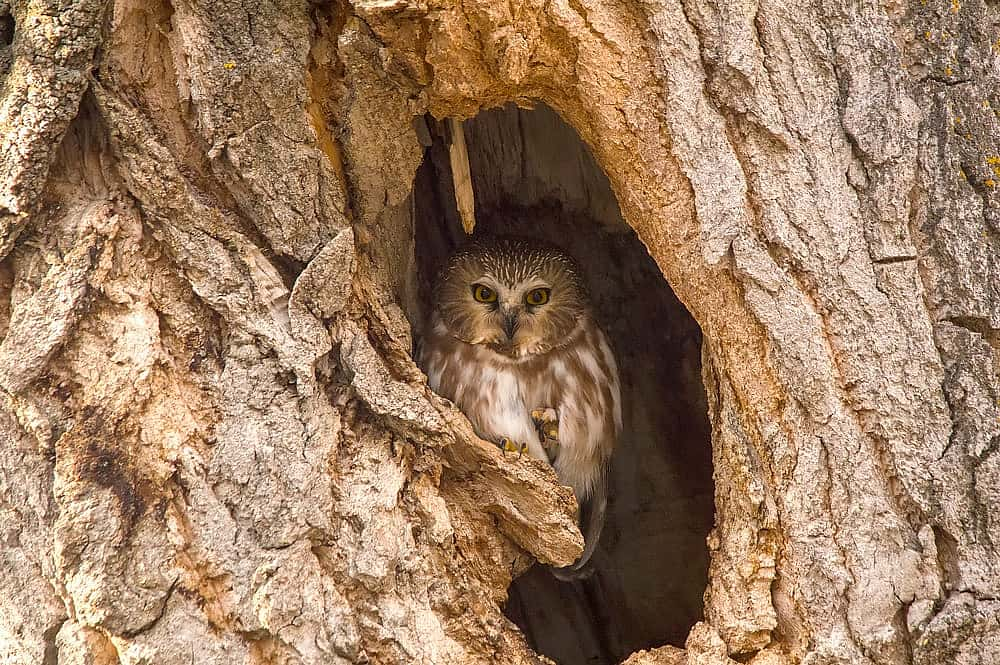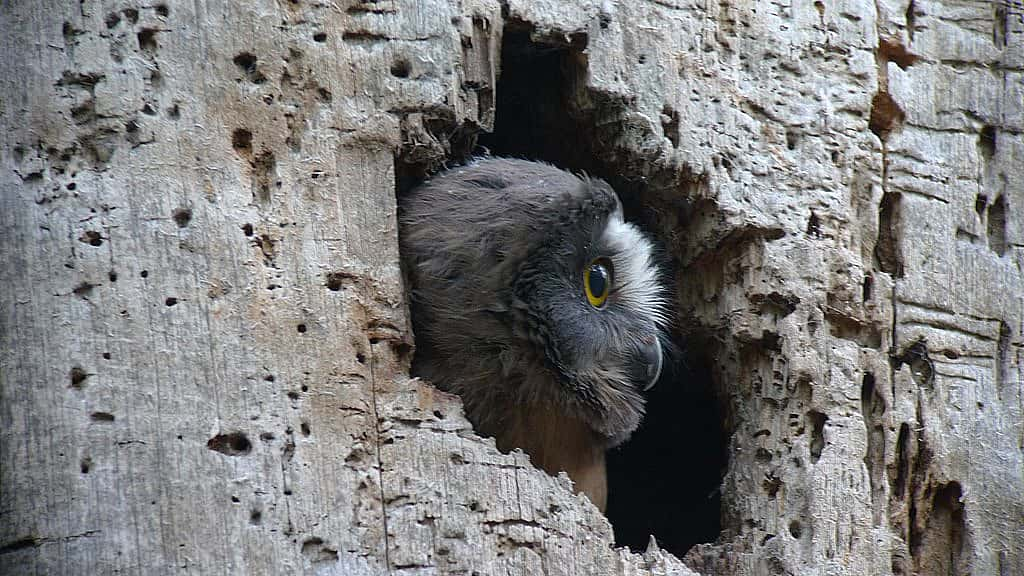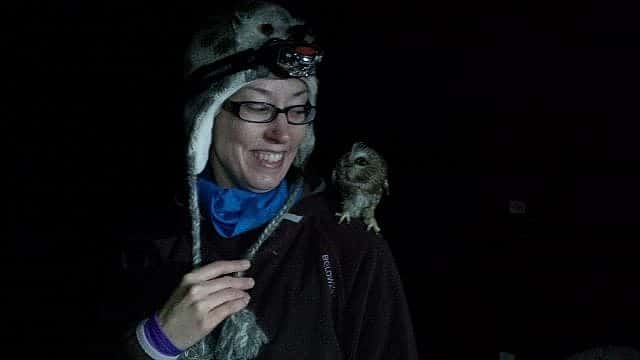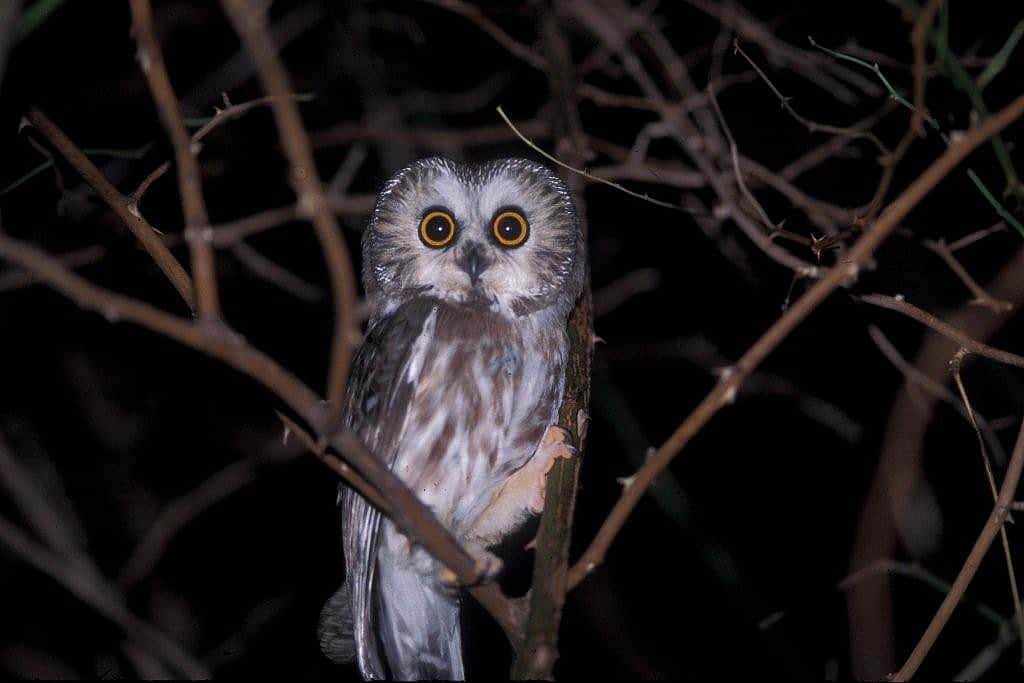My Favorite Interesting Facts About Northern Saw-whet Owls
Northern Saw-whet Owls are one of the smallest owls in the world. Though to their favorite prey, mice, as well as to other small mammals, they are fierce, silent hunters, planning on making a meal of them. Saw-whet owls also occasionally hunt small birds and will sometimes dine on insects. These tiny owls live in forested areas throughout most of Canada, the United States, and some areas of Mexico and are seldom seen. Being highly nocturnal, saw-whet owls spend their days roosting, camouflaged within the foliage of trees, waiting silently until late into dusk before beginning to hunt.
In this blog I will share eight of my favorite facts about saw-whet owls.
1) The plumage coloration of the juvenile and adult saw-whet owl is so vastly different that if you are unfamiliar with the species you would think they were two different types of owls. Around the age of one year, juveniles will complete their first molt. At this time they acquire their adult plumage. The saw-whets will also become sexually mature at this age and may begin breeding.
2) The female saw-whet owl does all the incubation and brooding while the male hunts. When the young are about 18 days old, the female leaves the nest and roosts elsewhere, often not returning to help care for the nestlings. The male, however, will continue to feed the young even after the female has left, as well as for at least a month after the young have fledged (flown from the nest).
3) During the time the female saw-whet is actively participating in the care of the nestlings, she keeps the nest very clean. After she abandons the area, leaving the feeding of the young to the male, a mess begins to accumulate. By the time the young leave the nest, the nest cavity has a layer of leftover prey parts, feces, and pellets.
4) Saw-whet owls are often thought of as “tame,” because humans can easily approach them. Sometimes these owls can even be picked up from the branch they are roosting on! It is believed that this may be due to the owls having never previously encountering humans in their dense forest habitat and therefore they do not perceive us as dangerous.
5) A Saw-whet owl will often catch a mouse during the night, carry the prey to its daytime roost, and stand on the prey until the following evening before eating it.
In this short video you will observe a saw-whet owl standing on prey while roosting during the day.
https://www.youtube.com/watch?v=Bcb0SbzNxxQ
6) Saw-whet owls will cache extra food. They may kill as many as 6 mice, one after the other, without consuming any of them during the time of the hunt. In the winter, the cached prey may freeze. When the cached prey is retrieved, it will be carried to a roosting area where the owl will thaw the prey by lying down on it in the same manner they incubate eggs.
7) When a saw-whet feels threatened, it will elongate its body, often bringing one wing around to the front of its body to hide its legs and feet. It is believed this is to help camouflage the owl by causing it to appear more like a tree branch.
8) Many owl species have asymmetrical ears. Saw-whet and boreal owls, however, have the most asymmetrical ears of all the owl species. The right ear opening is higher and faces upward, while the left ear opening is located low on the head and faces downward. Tilting the head until sounds reach both ear openings at the same time, these owls can detect prey with incredible accuracy.
Photo Credits:
The photo of the saw-whet owl held in a gloved hand courtesy of The Draper Museum Raptor Experience.
Three immature Saw-whet Owls © Sam May, Attribution License
Adult saw-whet at night by Herman Mays, Noncommercial Attribution License
Adult Saw-whet owl perched during the night © Richard attribution-NonCommercial-NoDerivs 2.0 Generic
Written By
Anne Hay
Anne Hay has a Bachelor's degree in Elementary Education and a Master's in Computers in Education. She spent most of her working years teaching third grade at Livingston School in Cody, Wyoming. After retiring she began doing a variety of volunteer work for the Buffalo Bill Center of the West’s Draper Natural History Museum. Anne loves nature and has a concern for the environment. She believes that educating the public, so that they will have a better understanding and appreciation for the natural world, is very important. Because of this belief, volunteering at the Center is a perfect fit. She spends time in the Draper Lab, observing eagle nests for Dr. Charles Preston’s long-term research project on nesting golden eagles, writing observation reports of raptor sightings in the Bighorn Basin, and working with the Draper Museum Raptor Experience. Anne states that, “Having a bird on my glove, is one of my all time favorite things in life.”
